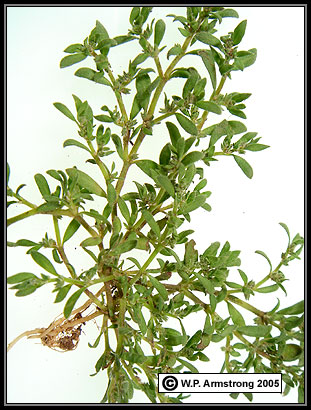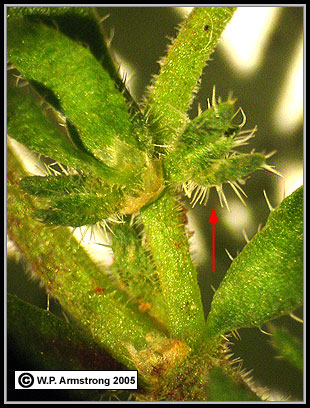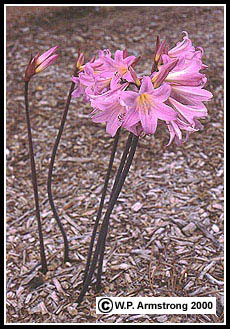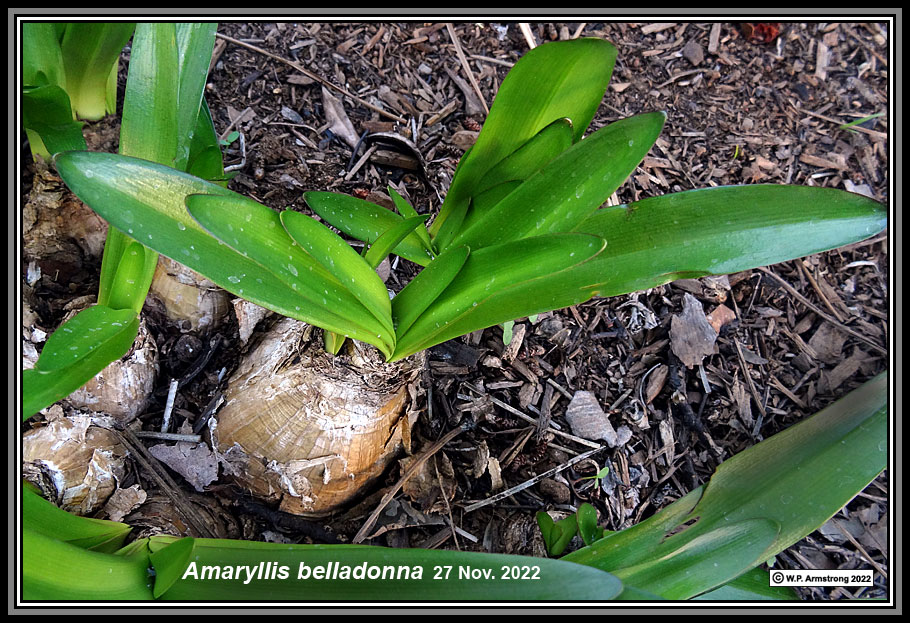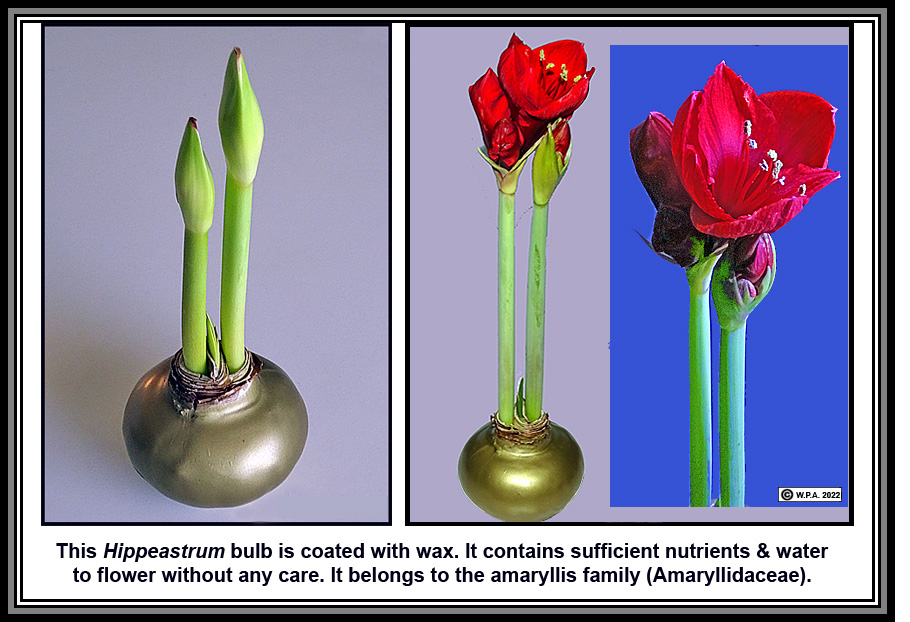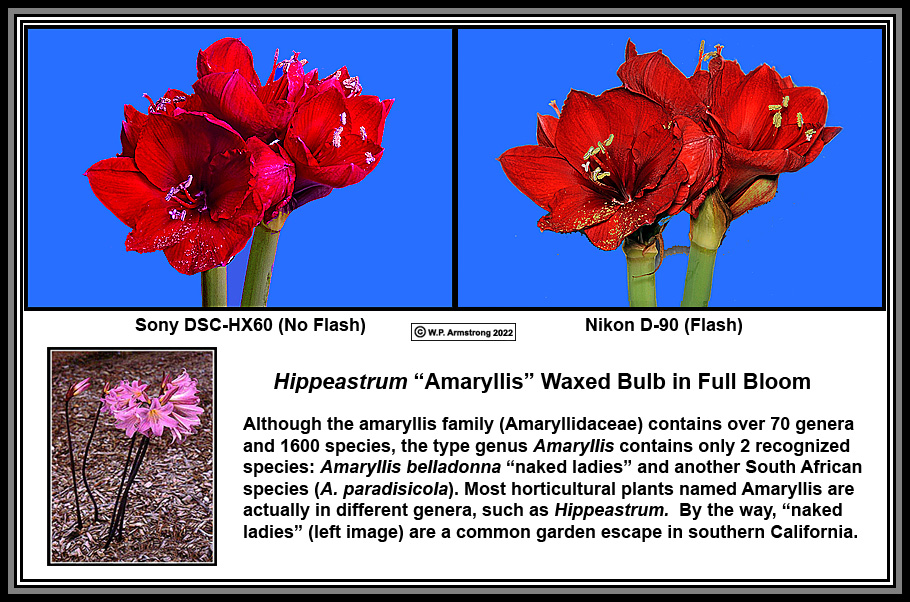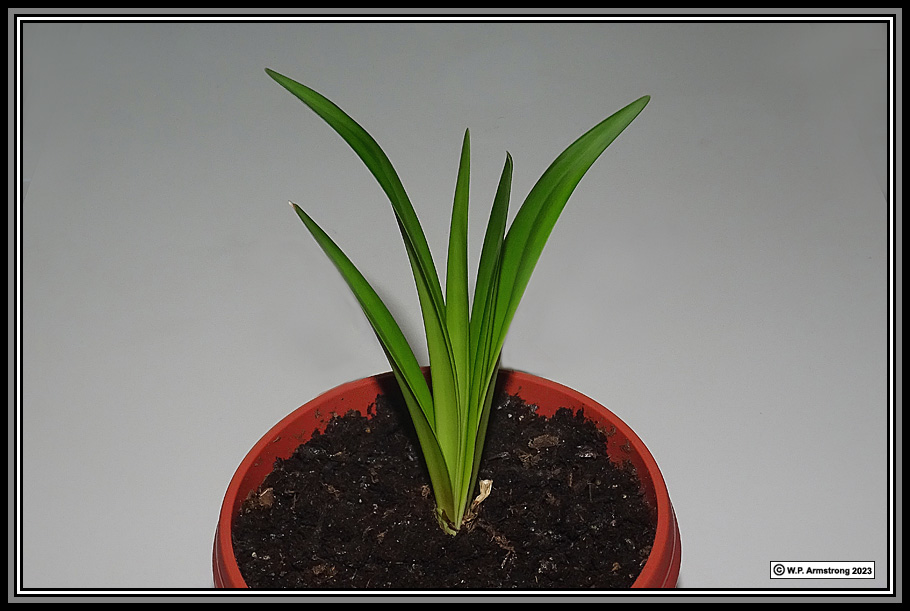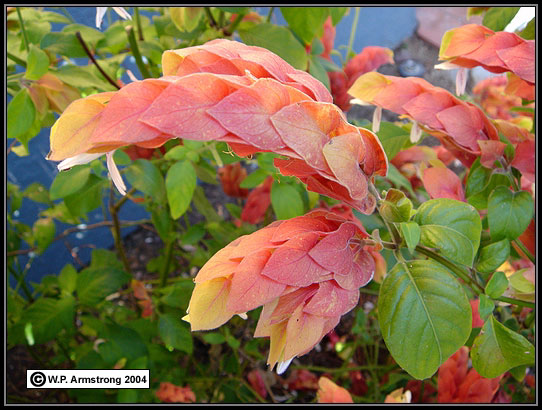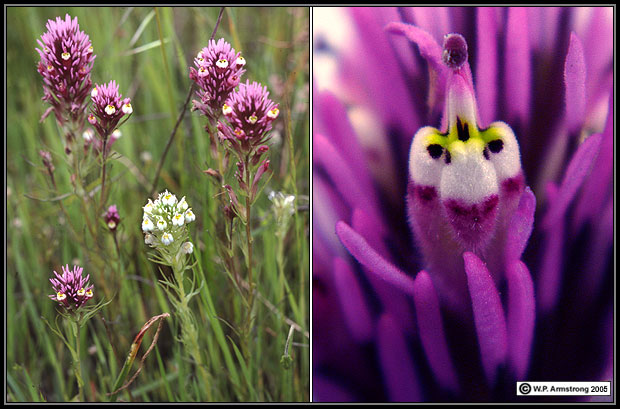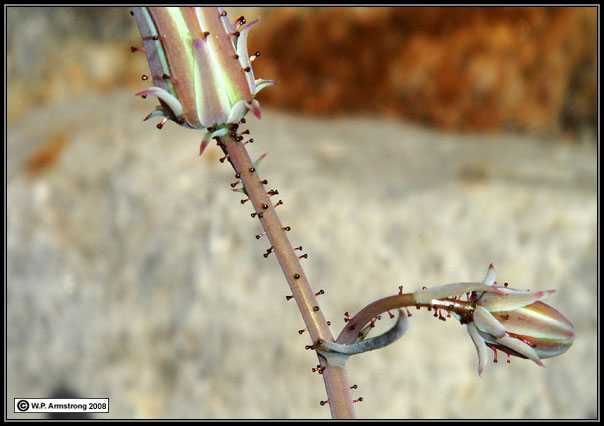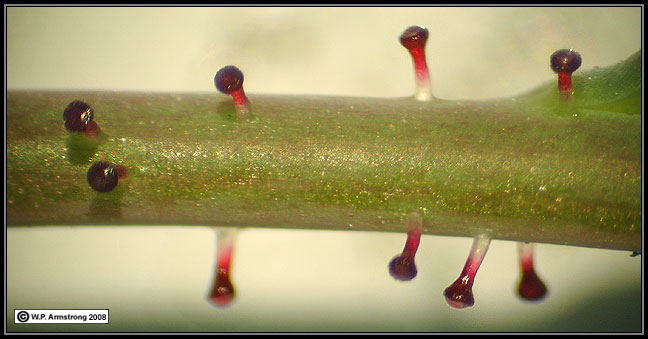The Curious Names Of Wildflowers
Rational And Irrational Common Names
The common or vernacular names of plants are often strange and even amusing at times. The "pineapple" is not in any way related to either pines or apples, and "peppergrass" is not a pepper, nor is it related to the Grass Family (Poaceae). The logic behind names such as "bouncing bet," "ramping fumitory," "bastard toadflax," "lady-of-the-night," and "go-to-bed-at-noon" is not readily apparent. It is also rather disappointing to discover that "Kentucky bluegrass" was introduced from Europe and the "California pepper tree" is native to Peru. But in spite of the numerous irrational names for plants, there are many common names that are descriptive and meaningful; however, you may have to look very carefully to see the obvious derivation of the name. In addition to one or more common names, plant species also have a scientific binomial consisting of a first name (genus) and a last name (specific epithet), sort of like the first (given name) and last name (surname) of people. Scientific names are commonly derived from Greek or Latin and are spelled in the Roman alphabet the same way throughout the world. Therefore, Pinus ponderosa refers to the same tree, regardless of the country or native language. Since plants may have more than one common name, and since common names may have different translations, scientific names are used in publications and scientific correspondence. Scientific names, however, are not always completely logical when you consider a yellow violet named Viola purpurea, and a one-leaved (or is it two-leaved?) plant named Unifolium bifolium. The wildflower Muilla is an anagram derived by spelling its onion relative (Allium) backwards. You can probably think of a popular laxative that is also an anagram. Although there is some disagreement among botanists, common names can be very useful, particularly when they describe a plant in a meaningful way that is easy to remember and pronounce. The following text box features a strange fungus (not a flowering plant) with a very unusual (but appropriate) scientific first and last name.
There are numerous desert natives with very descriptive common names. The flowers of "dyeweed" (Psorothamnus emoryi) are covered with little orange glands that produce a saffron-yellow dye which readily rubs off and was used by Indians for art work. The thorns of "catclaw acacia" (Acacia greggii) are so effective that this shrub is sometimes called "wait-a-minute bush." "Desert fir" (Peucephyllum schottii) has dark, evergreen leaves that resemble needles of the cone-bearing fir tree (Abies), although they are not related. A wildflower called "tackstem" (Calycoseris parryi) looks like someone drove small-headed nails into its stem. The "tacks" are actually small glands. The name "sandpaper plant" (Petalonyx thurberi) is readily apparent when you rub the leaves of this little desert shrub. "Creosote bush" (Larrea tridentata) is named for its olfactory similarity to the pungent wood preservative used on fence posts and telephone poles. Cheese bush (Hymenoclea salsola), another common aromatic shrub, actually smells like cheese. "Cheese-weed" (Malva parviflora) produces wheel-shaped fruits composed of one-seeded sections. The sections fit together like a wheel of cheese. One of the most common questions asked by my students on desert field trips is whether creosote comes from the creosote bush. The answer is an unequivocal no. The commercial source of creosote is derived from the distillation of coal tar. It is produced by high temperature carbonization of bituminous coal. Wood creosote is obtained from the distillation of wood tar from several woods of the eastern United States. Wood creosote is a mixture of phenolic compounds that are used medicinally as an antiseptic and expectorant. Under no circumstances should coal tar creosote be taken internally. Although creosote bush does not grow in the chaparral plant community, the dried leaves of this shrub are the source of "chaparral tea," a controversial herbal remedy with antitumor properties. The leaves contain a powerful antioxidant that apparently destroys tumor cells; however, there are reported cases of liver toxicity, including toxic hepatitis and jaundice. Desert and mountain wildflowers are named after just about every conceivable thing, including pincushions, brushes, houses, musical instruments, jewelry and the anatomy of animals. Just a few examples are "pincushion flower" (Chaenactis fremontii), "Indian paintbrush" (Castilleja affinis), "Chinese houses" (Collinsia heterophylla), "scarlet bugler" (Penstemon centranthifolius), "golden eardrops" (Dicentra chrysantha), "steer's head" (Dicentra uniflora) "mule ears" (Wyethia mollis), "deer's ears" (Frasera parryi), "elephant heads" (Pedicularis groenlandica), "cat's ears" (Hypochoeris glabra), "ox tongue" (Picris echioides), "lamb's quarters" (Chenopodium album), "goosefoot" (Chenopodium californicum), "bird's beak" (Cordylanthus filifolius), and "stork's bill" (Erodium texanum). 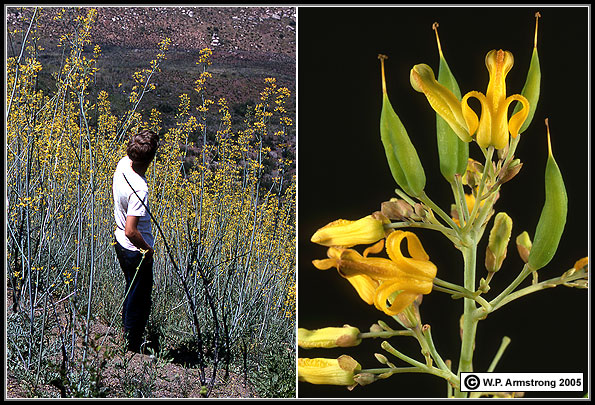
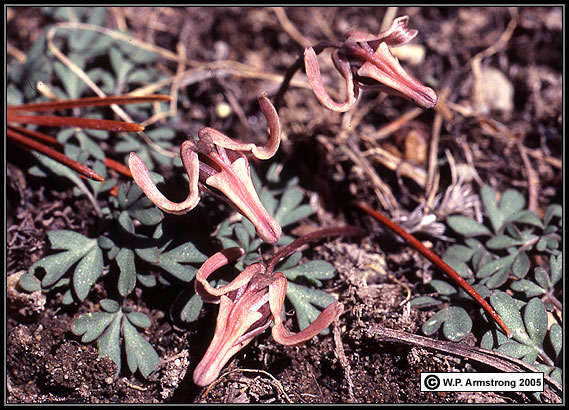
The names of many desert natives are derived from Spanish, and in some cases, are spelled the same way on both sides of the border. The vivid red flowers of "chuparosa" (Beloperone californica) are frequently visited by hummingbirds (chuparosas). The verb chupar means "to suck." What better name could have been given to the desert tree with pale green bark than "palo verde" (Cercidium floridum), meaning green stem? An attractive gray shrub with yellow daisy-like flowers is appropriately called "incienso" because the resin was burned as incense in early Spanish missions. It is perhaps more commonly known as "brittle bush" because of its easily broken branches. The name "calabazilla" or little gourd (Cucurbita foetidissima) aptly describes this strong-scented, trailing vine that is common along desert washes and roadsides in late summer and fall. It is also called Coyote Melon, presumably because coyotes eat the seeds and pulp when they are hungry. [The seeds commonly appear in coyote scat when the gourds are plentiful.] The common shrub of the high desert, "yerba santa" (Eriodictyon trichocalyx), had many medicinal uses by Indians and early settlers and literally means saintly or holy herb. The large "senita cactus" (Lophocereus schottii) of southern Arizona and Mexico is named after the word senita meaning "old one." The upper ribs of this cactus are covered with gray, whisker-like spines, suggesting senescence.
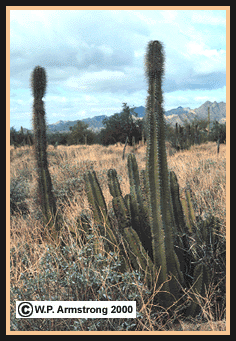
The less apparent common names are even more intriguing especially when you discover why the plant was given its unusual name. One of the strangest and most interesting wildflowers of the southwest mountains is called "ground cone" (Boschniakia strobilacea). The plant is seldom seen by the casual observer, perhaps because it usually pushes out of the soil near or under the branches of shrubs. The above-ground flower stalk is strikingly similar to a small pine cone, and with age looks even more like an old, weather-beaten cone. But you can be sure it is not a pine cone when you see small purplish flowers between the numerous overlapping scales. The fleshy flower stalk arises deep in the ground from a tuberous mass attached to the root of a nearby host shrub. Ground cone is a root parasite related to the strange broom-rapes which appear in desert riverbeds and in the fields of irate tomato farmers. Broom-rapes were named from their one-sided parasitic affair with certain leafless shrubs called "brooms." In fact, one of our desert brooms is called "turpentine broom" (Thamnosma montana), a strong-scented little shrub with purple flowers and gland-dotted fruits. It is one of the few native members of the Citrus Family (Rutaceae) found in the southwest.
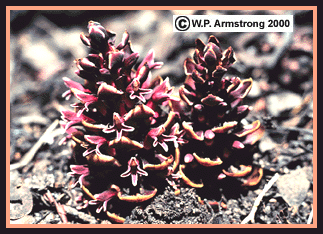
One of the loveliest wildflowers of sandy soils and sand dunes is "dune primrose" (Oenothera deltoides). It has very showy, large white flowers that turn pinkish with age. It often grows in profusion with beautiful pinkish-purple "sand verbena" (Abronia villosa), producing a spectacular wildflower display. Another common name for dune primrose is "desert lantern," and for years I was puzzled by the choice of this name. There is a logical reason for this name. Dune primrose has a very interesting growth form consisting of a central ascending flower stalk with radiating branches extending in all directions along the ground. At the end of the spring flowering season, the greenish branches eventually dry and curl upward toward the central axis. Woody seed capsules that split into four prongs now occupy the positions where the large flowers used to be. This entire dried structure is the source of the common name "desert lantern." Some naturalists use the name "desert bird cage" which is perhaps even more descriptive because of the outer upturned branches (like vertical bars) around the main central axis. These "lanterns" or "bird cages" are often over one foot tall, but because they are frequently partially buried by drifting sand, their complete form is not readily discernible.
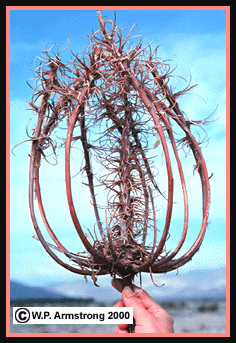
Another close relative of dune primrose with much smaller flowers in dense terminal spikes is called "desert bottle cleaner" (Camissonia boothii ssp. condensata). Each little white flower develops into a woody, four-pronged seed capsule. The dried flower stalks, with numerous, crowded, four-pronged capsules completely encircling it, greatly resemble a test tube or bottle cleaner, both in general appearance and size.
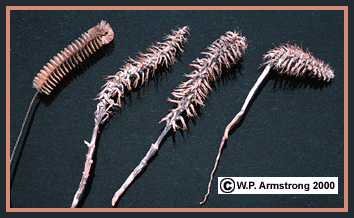
There are many different species of wild buckwheats (Eriogonum) in the southwest, but one of the most unusual is "desert trumpet" (Eriogonum inflatum), formerly labeled E. inflatum var. inflatum. As the specific epithet implies, the stems are conspicuously inflated or flared just below the point of branching, vaguely reminiscent of several wind musical instruments. If you look very carefully you may see a small hole near the top of the inflated area. This is the entrance to a miniature food storage room and incubator for minute wasps of the genus Onyerus. The female wasp packs the cavity with insect larvae and then lays her eggs upon them. However, some desert trumpets do not have the inflated stems, and these have been named variety deflatum. 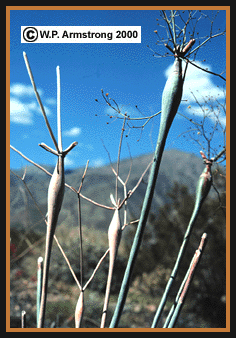
Athough most wildflower books and floras list inflated and deflated varieties of desert trumpet, this may be incorrect according to A.M. Stone and C.T. Mason, Jr. (Desert Plants, 1975). Stone and Mason studied wild and greenhouse populations of both varieties, and discovered that stem inflation was caused by larval feeding of gall insects, including a lepidopteran (Pyralidae) and a beetle (Mordellidae). According to Stone and Mason, the swollen tissue is produced in response to a chemical or physical irritation by ravenous insect larvae imbedded in the plant's tissues. They concluded that "the taxonomic recognition of the varieties "inflatum" and "deflatum" is not based on a genetic characteristic, but on a monstrosity, and has no validity."
Two additional wildflowers of the Mustard Family (Brassicaceae) with peculiar seed pods are "lyre pod" (Lyrocarpa coulteri) and "spectacle pod" (Dithyrea californica). Lyre pod is an interesting desert native of rocky outcrops and canyons, often found growing among clumps of other shrubs. It produces small seed pods with the general shape of a lyre, a small, stringed, harp-like instrument used by ancient Greeks to accompany singers and reciters. Curiously enough, a lyre-shaped marking occurs on the head of a seldom-seen snake that inhabits nearby rocky outcrops and hides during the day in deep crevices and under exfoliating granite slabs. The lyre snake is a rear-fanged snake with a venom that immobilizes small nocturnal lizards and rodents, and even bats when they are roosting. Unlike its deadly African relative, the boomslang, the lyre snake is not considered especially dangerous to people. 
Another member of the enormous Mustard Family (Brassicaceae) with unusual seed pods is "spectacle pod." This little wildflower has seed pods (called silicles) that resemble pairs of miniature eye glasses or spectacles. It commonly grows in sandy desert riverbeds and along roadsides of the Colorado Desert. Any discussion of unusual desert mustards would be incomplete without mentioning the striking "desert candle" (Caulanthus inflatus). This annual wildflower is named for its inflated, tapering stem which resembles a candle. Other desert species of Caulanthus, such as C. cooperi and C. hallii have main stems that are much more slender. The "candles" of C. inflatus occasionally appear in profusion along roadsides in the Mojave Desert and westward into California's San Joaquin Valley
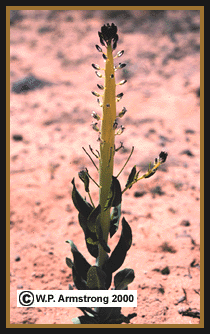
The Jepson Manual of California Plants (1993) lists 2 subspecies of Herniaria hirsuta, ssp. cinerea and ssp. hirsuta. The above plants appear to have characteristics intermediate between the two subspecies. The uniformly hirsute (hispid) pubescence is typical of ssp. hirsuta; however, the presence of only 2-3 stamens is characteristic of ssp. cinerea (ssp. hirsuta typically has 5 stamens). A California Flora by P.A. Munz (1959), A Flora of Southern California by P.A. Munz (1974) and Illustrated Flora of the Pacific States Vol. 2 by L. Abrams(1964) list it as H. cinerea. Weeds of California (1941) by W.W. Robbins, M.K.Bellue and W.S. Ball list it as H. cinerea, but describe it as having 2-5 stamens! Adding to the confusion, the Jepson Manual describes the sepals of ssp. cinerea as more or less (±) unequal, while describing the sepals of ssp. hirsuta as more or less (±) equal. Is less unequal similar to less equal, or is more unequal similar to less equal?
This species of Ranunculus is naturalized in some areas of southern California. The unusual specific epithet is dervived from its pistil which is "scrotiform" at the base with twin protuberances that resemble testicles in a scrotum. Its unofficial, crude vernacular name is "ballswort." It is not related to nutgrass, nutsedge or nutrush.
It would takes volumes to discuss all the
descriptive, bizarre, humorous, logical and illogical names of
wildflowers. In fact, there are thousands of interesting names in
the deserts of the southwestern United States alone. A number of
wildflower books are available, some of which include derivations
of the common names. One of the best is the classic Desert
Wildflowers by Edmund C. Jaeger (Stanford University Press,
1941). You can often learn interesting details about a wildflower's
growth habit, flower, fruit or early uses just from its common
name. Also catchy names are easier to relate to and communicate
about, and easier to remember. It has been estimated that even the
best botanists can only recall 5,000 plant names from memory, so
don't feel too badly if you can't remember them all.
The bulbs of Hippeastrum (often called "Amaryllis") coated in wax are sold as holiday gifts. They are closely related to the genus Amaryllis and belong to the same family Amaryllidaceae. Without any watering or care they will sprout into beautiful flowers. I have never tried to remove the wax and plant them in soil, but apparently this is a way to keep your plant alive for future years.
|

